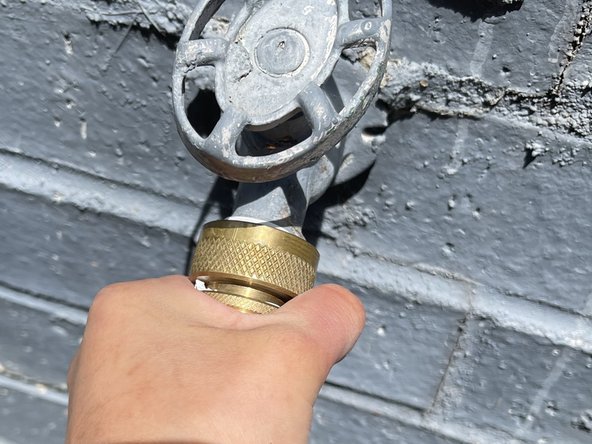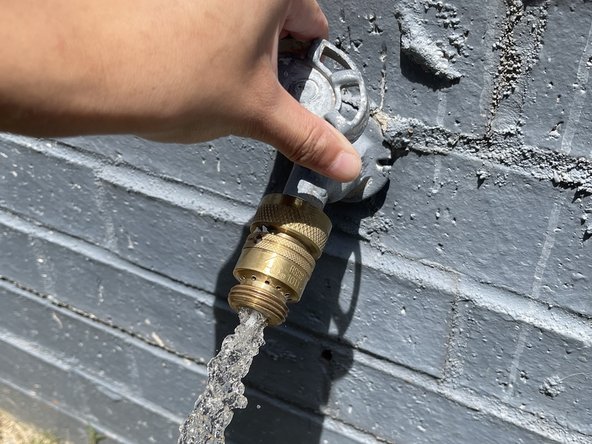Introdução
This guide demonstrates how to replace a standard spigot's vacuum breaker that's leaking, preventing water waste and/or contaminated water from entering into your home's water system. The adapter used in this guide is a Spigot Master SM1.125 Vacuum Breaker Adapter with a VACBFPZ4B Vacuum Breaker Hose Bib Back-flow Preventer, 3/4 Inch (any brand will also work).
This repair is relatively simple, requiring only a few household tools and less than an hour of your time.
O que você precisa
-
-
Confirm that the spigot is leaking from the vacuum breaker, and not a different component. Look specifically between the hose and vacuum breaker connection.
-
Disconnect the hose and ensure the spigot is turned off.
-
-
-
Use a pipe wrench to support the spigot and another to unscrew the vacuum breaker. If it unscrews, remove the breaker and skip to Step 7.
-
If the vacuum breaker is rusted on, or otherwise will not budge, use a compact handsaw with a metal-cutting blade to make a relief cut on the breaker.
-
-
Enjoy your leak-free spigot!
Enjoy your leak-free spigot!
Cancelar: não concluí este guia.
Uma outra pessoa concluiu este guia.
















